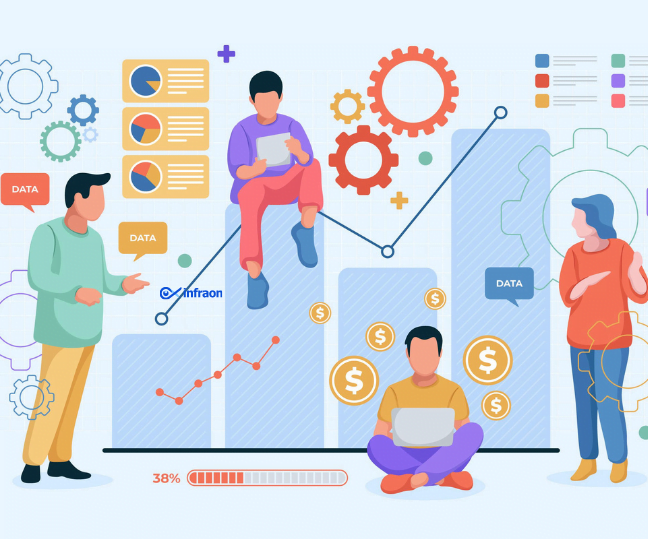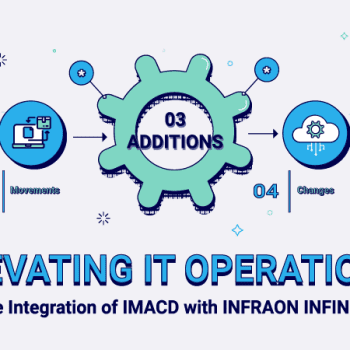Effective IT Asset Management (ITAM) and IT Asset Discovery Management do two things incredibly well – it saves time and money. Now, this may sound painfully obvious to astute readers like you. Yet the harsh reality is that ITAM, while on the radar of many CTOs, CEOs, IT heads, etc., hasn’t been given due importance when it comes to strategic decision-making. A recent market study reported that “More than 60% of IT professionals are missing key information to effectively manage their IT assets from procurement to disposal.”
Wondering why more importance is given to time and cost savings? Well, logic is certainly on your side! Time, when saved, allows IT professionals to focus on strategic endeavors instead of being bogged down by manual, time-consuming tasks. It speeds up service delivery, reduces downtime, and enables a swift response to issues and opportunities alike. Conversely, when we talk about cost savings in IT and service management, we are essentially alleviating budgetary pressures, enabling the allocation of financial resources to areas like innovation and product development. It also shields from cost overruns and helps maintain a healthy bottom line, which is crucial in economically volatile times.
Automated IT Asset Discovery
Automating IT Asset Discovery implies utilizing software to detect, identify, and record assets in an organization without human intervention. In a network with numerous devices and systems, automatic detection ensures accurate tracking of all assets in real-time, thereby negating the necessity of manual intervention and considerably reducing the scope of human error.
Imagine a scenario where new software licenses are purchased, devices are replaced, or new hardware is procured. Automated IT Asset Discovery seamlessly updates the inventory with no need for manual checks, ensuring IT managers have up-to-the-minute data about assets. Hence, it eliminates the need for manual audits, which are time-consuming and prone to inaccuracies.
Calculation method:
Evaluate the manual hours invested in IT Asset Discovery and multiply it by the hourly rate of IT personnel. Compare this with the automated process, considering software costs and reduced person-hours, to establish tangible savings.
Automated inventory management
A report showed that “29% of IT organizations spend excess staff hours trying to reconcile inventory and assets.” So, an automated inventory management system can keep track of every asset in an organization, ensuring that accurate, up-to-date data is always available. For example, as new software is procured or retired, an automated inventory management system updates the status instantly, helping to avoid over-purchasing or holding onto redundant assets.
This enables organizations to maintain only necessary inventory, thereby avoiding unnecessary costs related to over-licensing or non-compliance fines, and freeing up funds for alternative strategic investments. Furthermore, IT professionals no longer spend hours managing inventory data, allowing for focus on more strategic initiatives.
Calculation method:
Calculate cost savings by comparing the expenses associated with manual inventory management (labor hours, non-compliance fines, excess purchases) against the automated approach.
Workflow and task automation

Integrating workflow and task automation means pre-determined processes operate without requiring manual initiation or monitoring. Consider a software update needed across an organization. An automated workflow can schedule and implement this update outside of working hours, minimizing downtime for users, ensuring systems are up-to-date, and mitigating potential security vulnerabilities.
This ensures that IT systems remain secure and operative and negates the need for IT personnel to manually perform updates. So, it ends up freeing their time for other tasks and saving organizational resources that might otherwise be spent addressing issues stemming from outdated systems. For instance, a recent market report indicated that “workflow automation can save organizations up to 77% of their time spent on routine tasks.”
Calculation method:
Determine the labor hours saved by automated workflows and multiply by personnel costs. Factor in improved task accuracy and timeliness to evaluate comprehensive benefits.
Automated collaboration and communication
Automation in collaboration and communication means utilizing tools that send notifications and coordinate communication among team members and stakeholders. For instance, if an unauthorized software installation is detected, an automated alert can be instantly sent to relevant IT personnel without delay.
This minimizes the timeframe from issue detection to resolution and ensures that vulnerabilities or compliance issues are addressed promptly, reducing the potential for financial or reputational damage. Additionally, automated communication eliminates the need for IT staff to monitor systems manually for issues, thereby saving time.
Calculation method:
Compare the time taken for issue resolution using automated communication versus a manual approach, factoring in the potential financial impact of delayed responses.
Self-service capabilities
Incorporating self-service capabilities means end-users can independently resolve issues or make service requests through a portal, reducing the load on IT staff. For instance, if a user encounters a common issue, instead of logging a request and waiting for IT support, they could access a self-service portal, find a solution, and implement it immediately.
This reduces the downtime experienced by the user and decreases the workload for IT support teams. So, they can dedicate their time to addressing more complex, organization-wide issues, ultimately leading to better use of time and resources.
Calculation method:
Assess the reduction in IT service requests and calculate the saved man-hours, reflecting on the IT team’s capacity to address more complex, impactful tasks.
Centralized reporting and analytics
Deploying centralized reporting and analytics implies gathering all asset data in a unified repository, providing a singular view and analysis point for all assets. This avoids having to manually aggregate data from different sources and ensures that the data used for decision-making is consistent and up-to-date. This can be extremely important as market studies show that “almost 1 in 5 large businesses have suffered financial losses due to spreadsheet mistakes.”
For example, making a decision about renewing a software license can be done with immediate knowledge about current usage, avoiding over-purchasing or under-compliance, and ensuring funds are utilized optimally. Additionally, having readily available data saves time in decision-making processes, helping build a more responsive IT ecosystem.
Calculation method:
Assess decision-making efficiency and compare the outcomes with pre-ITAM implementation. Include considerations like better-informed investment decisions and avoided costs. Implementing ITAM means every dollar and minute counts, turning IT investments into measurable benefits for organizations. In a nutshell, it ensures assets are used effectively, avoids unnecessary costs, and frees up IT teams to focus on value-driven tasks. If you really think about it, the formula is straightforward: smart IT asset management equals tangible time and cost savings!


















